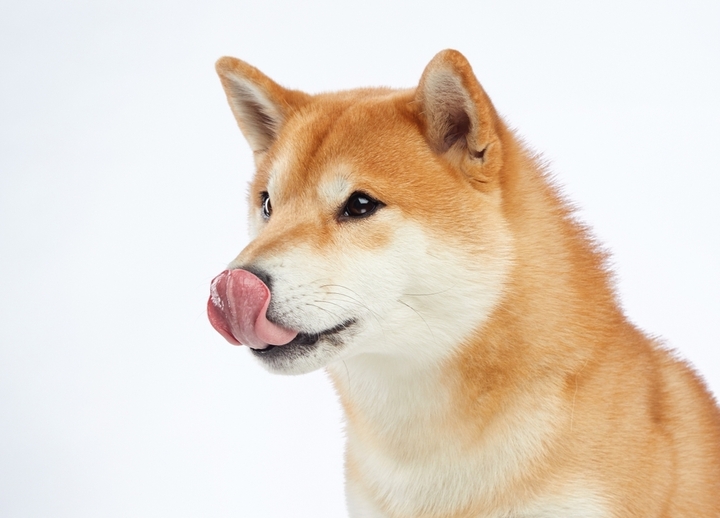Shiba Inu Dog Breed: Size, Personality and More

DogFoodAdvisor is reader supported See how
All reviews are 100% impartial but if you buy using links on this page, we may earn a referral fee.
The Shiba Inu is an ancient Japanese breed and may have arrived in Japan as early as 7000 B.C.
They were bred for hunting small game and ground birds in the mountainous areas of the Chūbu region. Due to their popularity, three separate regions in Japan developed their own types of the breed.
The Shiba Inu population drastically declined after World War I due to interbreeding with European breeds, famine, and disease. By 1926, very few pure Shiba Inus remained, fortunately in 1928 a survival program was developed to protect the remaining Shiba.
The first documented Shiba Inu to enter America was as recent as 60 years ago and The American Kennel Club (AKC) ranks this breed as the 46th most popular in the U.S.
It is known as a spirited and good-natured breed that adapts well in many different locations including towns, cities and the countryside.
General Characteristics:
- Origin: Japan
- Size: Small to medium
- Height: 13 to 16.5 inches
- Weight: 17 to 23 pounds
- Lifespan: 13 to 16 years
Appearance:
- Coat: They have a double coat, a straight, stiff outer coat and a dense undercoat.
- Colors: A variety of colors including red, red sesame, black and tan and white.
- Build: Small but well-muscled.
Shiba Inus Temperament:
- Alert: They are known for being alert due to their sensitivity to loud or unusual noises, which makes them ideal guard dogs, as well as loyal companions.
- Active: Shiba Inu dogs are high-energy and very intelligent, requiring mental stimulation and at least one hour of exercise each day.
- Independent: A friendly breed that forms close bonds with their pet parent; however, they are fairly independent as well. They may follow you around but prefer affection on their own terms.
Training and Exercising:
- Training: They are quick and eager learners who respond well to positive reinforcement techniques.
- Exercise: Due to their active and energetic nature, a mix of walks, playtime, and interactive games is needed to keep them mentally and physically stimulated.
Grooming:
- Shedding: Shiba Inus shed all year-round due to their thick, double coat. Brush twice weekly or use a blow dryer to remove loose hair and dirt.
Interesting Facts:
- In 1937, the Japanese government designated the Shiba Inu a national monument, which is a highly prized and valuable property in Japan.
- The breed is named for its history as a hunter in the rugged mountains of Japan. ‘Shiba’ means ‘brushwood,’ referring either to the brush in the mountains or to the dog’s reddish color, and ‘Inu’ means ‘dog’ in Japanese.
- Shiba Inus don’t usually bark. Instead, they make a sound called the “Shiba Scream” when they are unhappy or dislike something. They may yodel to get attention or make a purring sound when someone strokes them.
- The oldest Shiba Inu lived to be 26 years old.
- Shiba Inu, though cute and cuddly, have a more cat-like personality. They are independent, aloof, and sometimes stubborn, but remain faithful and loyal to their owners.
Shiba Inus Price:
The average cost of a Shiba Inu in the U.S. varies depending on the dog’s pedigree, the breeder’s reputation, location, and whether the dog is intended for show, breeding, or as a pet. Here’s a general guide:
Show Quality or Breeding Quality Shiba Inu:
Price Range: $1,500 and $3,500
If buying a Shiba Inu puppy or specific breeds of Shiba Inu, the price will be towards the more expensive end of the spectrum.
Rescue or Adoption:
Adoption Fee: Around $300
A Shiba Inu adopted from a rescue organization or shelter generally costs less. This fee often includes initial veterinary care and spaying/neutering.
Best Food for Shiba Inu
Wellness Simple Limited Ingredient Turkey & Potato Formula
Wellness Simple Limited Ingredient Turkey & Potato is ideal for Shiba Inus because its single-protein, grain-free formula helps prevent food sensitivities while supporting their lean muscle mass. With omega fatty acids for a healthy coat and easily digestible ingredients, it promotes skin health, digestion, and overall well-being.
For more choices: See our Best Dog Food for Shiba Inu page.
Final word
The Dog Food Advisor does not accept money, gifts, samples or other incentives in exchange for special consideration in preparing our reviews.
However, we do receive a referral fee from online retailers (like Chewy or Amazon) and from sellers of perishable pet food when readers click over to their websites from ours. This helps cover the cost of operation of our free blog. Thanks for your support.
For more information, please visit our Disclaimer and Disclosure page.



